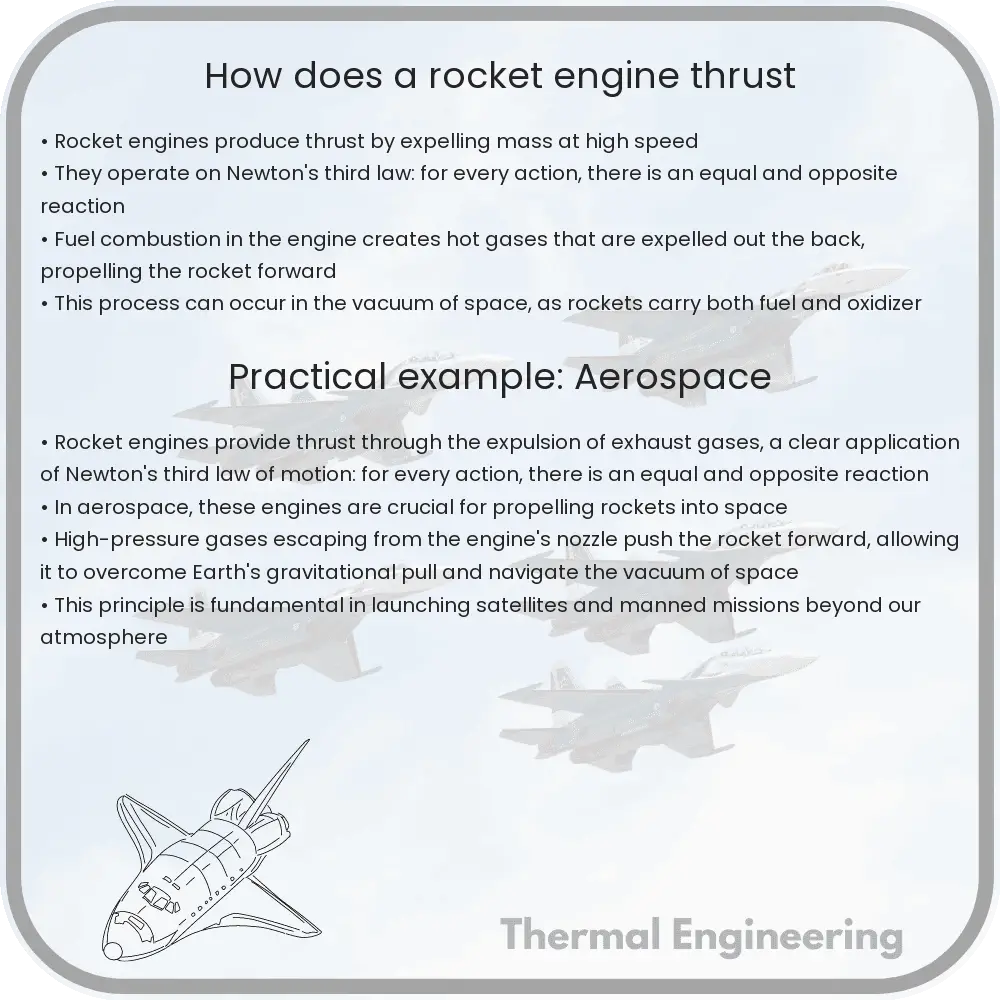Delve into the workings of rocket engines and the principles of thrust generation using Newton’s laws, fuel types, and the mathematics behind propulsion.

Understanding Rocket Engine Thrust
Rocket engines are fascinating pieces of engineering designed to propel objects through the vacuum of space. But how exactly do these engines create the thrust necessary for launching a rocket out of Earth’s atmosphere or maneuvering it in space? Let’s break down the basic principles of rocket engine operation, using Newton’s laws of motion as our guide.
Newton’s Third Law and Rocket Propulsion
Newtons third law of motion states that for every action, there is an equal and opposite reaction. This principle is fundamental to understanding how rocket engines work. In the simplest terms, a rocket engine expels mass in one direction, and as a reaction, the rocket itself is pushed in the opposite direction.
The Role of Propellant in Rocket Engines
Rocket engines operate by burning a mixture of fuel and an oxidizer, collectively known as propellant. The engine rapidly heats this propellant, converting it into a high-pressure gas. This gas is then directed out of the rocket nozzle at high speed, creating thrust.
The Process of Thrust Generation
- Combustion: Inside the combustion chamber, fuel and oxidizer react chemically to form hot, high-pressure gases.
- Expansion: These gases expand rapidly and are funneled towards the nozzle, where the area decreases, guiding the gases out at increased speeds.
- Exhaust: The gases exit the rocket nozzle at high velocity, pushing against the internal structure of the rocket and creating the forward thrust (as per Newton’s third law).
Mathematics of Rocket Thrust
The thrust (F) generated by a rocket engine can be quantified using the rocket equation, formally known as the Tsiolkovsky rocket equation:
F = m * v + (dm/dt) * ve
- m: the mass of the rocket
- v: the velocity of the rocket
- dm/dt: the rate at which the rocket loses mass, i.e., the rate of fuel consumption
- ve: the exhaust velocity of the gases expelled from the rocket nozzle
This equation illustrates that the thrust of a rocket is directly dependent on the rate at which the propellant is expended and the velocity at which it is ejected.
Types of Rocket Engines
There are several types of rocket engines, each utilizing different engineering solutions to achieve thrust:
- Liquid rocket engines: Use liquid propellants. They are complex but allow greater control over the engine’s thrust output.
- Solid rocket engines: Use solid propellants. They are simpler and generally more reliable, but once ignited, they cannot be throttled or turned off.
- Hybrid rocket engines: Combine aspects of solid and liquid rocket engines, using solid fuel and a liquid or gaseous oxidizer.
Conclusion
Rocket engines are powerful examples of applying physics and engineering principles to achieve remarkable feats, such as space travel. Understanding these principles not only gives insight into the functionalities of rockets but also highlights the innovations and complexities involved in space exploration technology. By examining the basic mechanics of how rocket engines produce thrust, we gain a better appreciation for the challenges and achievements of aerospace engineering.